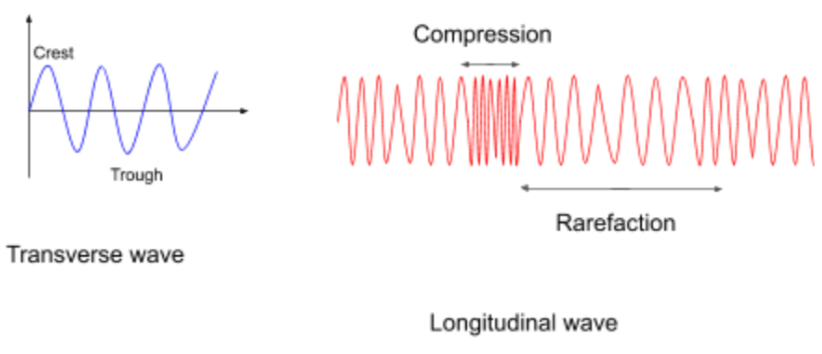
State whether true or false:
Sound waves are transverse waves.
Answer
580.2k+ views
Hint: A transverse wave is a traveling wave whose wave course or propagation path is perpendicular to oscillation. The waves which can be generated on a horizontal string length by connecting an end to the other and driving it up and down is a clear illustration.
Light is an example of a transverse wave, in which the electric and magnetic fields oscillate, aiming towards the correct corner into the perfect light beams representing the direction of propagation.
< b>Complete answer
The sound analysis should always start with sound wave properties. Two basic wave types are transverse and longitudinal, which are differentiated by the propagation of the wave. In a transverse wave like the wave produced in an extended rope if one of the ends is wiggled back and forth, the motion that makes up the wave is perpendicular to or transverse towards the direction (along the rope) in which the wave travels. Electromagnetic sources like light and radio create an important family of transverse waves, in which the electric and magnetic fields that make up the wave oscillate are perpendicular to the propagation direction.

The sound can be propagated as longitudinal waves and transverse waves in solids via mediums such as air, water. A transverse wave is one in which the vibration of medium particles is perpendicular to the direction of wave movement, while in sound waves, vibrations of medium particles are parallel to the direction of wave movement. Therefore, sound waves are longitudinal waves rather than transverse waves.
Hence, the above statement is false.
Note: Longitudinal wave, a wave of periodic disturbance or vibration occurring in the same direction as the wave is advancing. A coiled spring, compressed at one end and then released, experiences a compression wave that passes its length and then a stretch; a point on each coil of the spring moves with the wave and returns along the same direction, passes through the new position, and then reverses its movement.
Light is an example of a transverse wave, in which the electric and magnetic fields oscillate, aiming towards the correct corner into the perfect light beams representing the direction of propagation.
< b>Complete answer
The sound analysis should always start with sound wave properties. Two basic wave types are transverse and longitudinal, which are differentiated by the propagation of the wave. In a transverse wave like the wave produced in an extended rope if one of the ends is wiggled back and forth, the motion that makes up the wave is perpendicular to or transverse towards the direction (along the rope) in which the wave travels. Electromagnetic sources like light and radio create an important family of transverse waves, in which the electric and magnetic fields that make up the wave oscillate are perpendicular to the propagation direction.

The sound can be propagated as longitudinal waves and transverse waves in solids via mediums such as air, water. A transverse wave is one in which the vibration of medium particles is perpendicular to the direction of wave movement, while in sound waves, vibrations of medium particles are parallel to the direction of wave movement. Therefore, sound waves are longitudinal waves rather than transverse waves.
Hence, the above statement is false.
Note: Longitudinal wave, a wave of periodic disturbance or vibration occurring in the same direction as the wave is advancing. A coiled spring, compressed at one end and then released, experiences a compression wave that passes its length and then a stretch; a point on each coil of the spring moves with the wave and returns along the same direction, passes through the new position, and then reverses its movement.
Recently Updated Pages
Master Class 9 Social Science: Engaging Questions & Answers for Success

Master Class 9 Science: Engaging Questions & Answers for Success

Master Class 9 English: Engaging Questions & Answers for Success

Master Class 9 Maths: Engaging Questions & Answers for Success

Master Class 9 General Knowledge: Engaging Questions & Answers for Success

Class 9 Question and Answer - Your Ultimate Solutions Guide

Trending doubts
Which places in India experience sunrise first and class 9 social science CBSE

Fill the blanks with the suitable prepositions 1 The class 9 english CBSE

Write the 6 fundamental rights of India and explain in detail

Difference Between Plant Cell and Animal Cell

What is pollution? How many types of pollution? Define it

What is the Full Form of ISI and RAW




